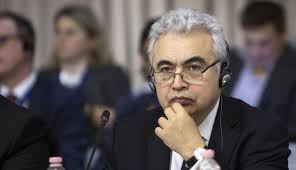The International Energy Agency (IEA) has expressed concern over the “unexpected flattening“ of renewable-energy capacity additions in 2018. which. at 180 GW. remained in line with additions recorded in 2017.
It was the first time since 2001 that year-on-year additions of renewable energy failed to grow and coincided with a 1.7% rise in greenhouse-gas emissions to an historic high of 33 gigatonnes.
The IEA said in a statement that the 2018 renewables additions represented only 60% of the 300 GW in net new additions needed yearly to 2030 to meet the long-term climate goals outlined in the Paris Climate Agreement.
“The world cannot afford to ‘press pause’ on the expansion of renewables and governments need to act quickly to correct this situation and enable a faster flow of new projects.“ IEA executive director Dr Fatih Birol said in a statement.
Birol attributed the poor performance to policy instability. while cautioning that “stop-and-go policies“ were particularly harmful to markets and jobs.
In 2018. South Africa ended a three-year hiatus in its failure to implement a stated policy of procuring new renewables capacity. precipitated by Eskom’s refusal to sign power purchase agreements (PPAs) with 27 wind and solar projects.
The State-owned company refused to enter into the PPAs on the basis that it had returned to a surplus operating position. In 2018 and 2019. however. Eskom once again reverted to load-shedding. owing to a shortage of capacity brought about by high levels of plant breakdowns at its coal-fired power stations and delays to the introduction of new coal capacity.
While describing the 2018 performance as “deeply worrying“. Birol said the upward trend could be restored through the introduction of “smart and determined policies“.
“Thanks to rapidly declining costs. the competitiveness of renewables is no longer heavily tied to financial incentives. What they mainly need are stable policies supported by a long-term vision. but also a focus on integrating renewables into power systems in a cost-effective and optimal way.“ Birol said
A recent report released with the International Renewable Energy Agency (Irena) stated that renewables were able to reduce energy-related carbon dioxide emissions immediately and substantially. particularly when paired with other sectors such as transportation and heating.
It calculated that cumulative investments would need to reach $110-trillion by 2050 to transition the global energy system towards a scenario that limits the rise in global temperature to below 2 °C above pre-industrial levels.
The figure is $15-trillion higher than the current planned investment scenario of $95-trillion. which still risks putting the world on a pathway of a 2.6 °C temperature rise. It is a full 40% lower. however. than Irena’s 2018 projection for transitioning to a decarbonised energy system.
Irena said shifting the composition of investments away from the fossil-fuel sector towards energy efficiency. renewables and enabling infrastructure will. nevertheless. require a political commitment. as a portion of the additional investments are front loaded. In addition. the cumulative additional system costs over the period to 2050 add up to $21-trillion.
The savings from avoided subsidies and reduced environmental and health damages would be about three to seven times larger than the additional energy system costs.
The IEA reported that solar photovoltaic (PV). which has expanded exponentially since 2015. remained the largest single renewables technology added in 2018. However. at 97 GW it fell short of earlier expectations that additions would. for the first time. breach the 100 GW level.
The IEA attributed the slowdown to the “sudden change“ in China’s solar PV incentives. which were introduced to curb costs and address grid-integration challenges.
China still accounted for 45% of total capacity additions. adding 44 GW of solar PV in 2018. The country’s deployment fell well short of the 53 GW recorded in 2017. however.
Growth was stable in the US and solar PV additions increased in the European Union. Mexico. the Middle East and Africa. which together compensated for the slowdown in China.
Wind remained the second-largest renewables technology to be added. with 50 GW of additions recorded in 2018. It was followed by hydro. at 20 GW and bioenergy additions of 9 GW.
 Iran Energy News Oil, Gas, Petrochemical and Energy Field Specialized Channel
Iran Energy News Oil, Gas, Petrochemical and Energy Field Specialized Channel




